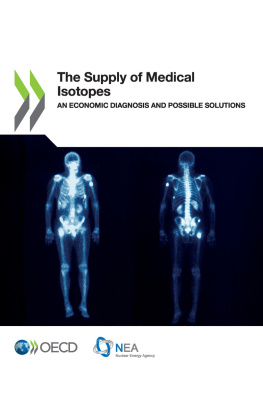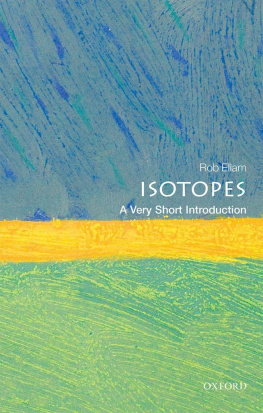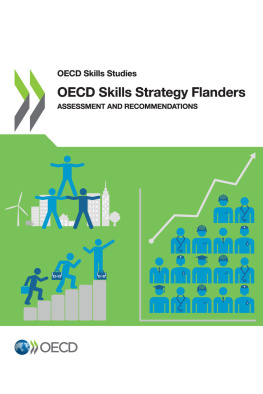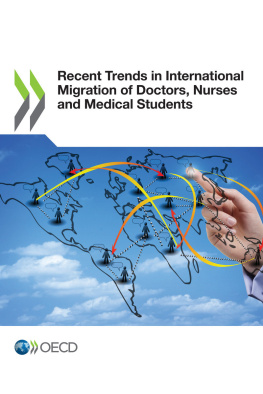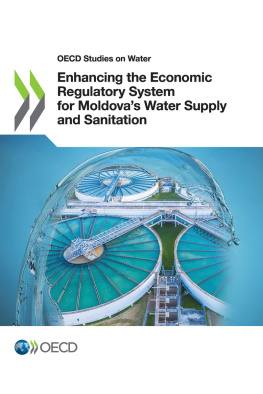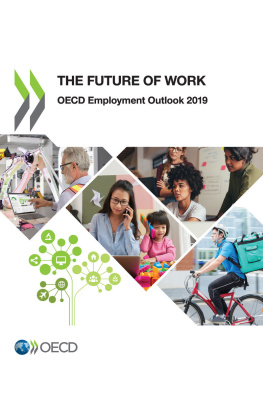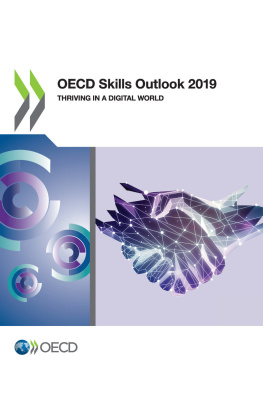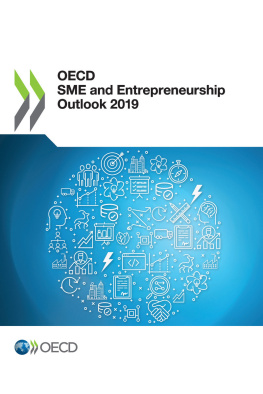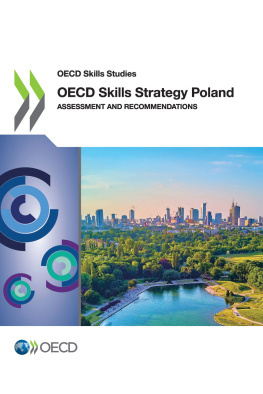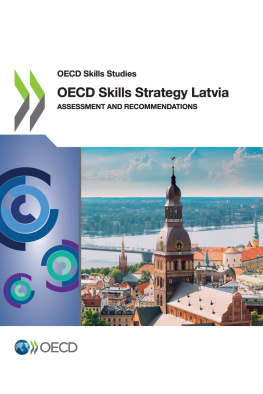OECD and NEA - The Supply of Medical Isotopes
Here you can read online OECD and NEA - The Supply of Medical Isotopes full text of the book (entire story) in english for free. Download pdf and epub, get meaning, cover and reviews about this ebook. year: 2019, publisher: OECD Publishing, genre: Romance novel. Description of the work, (preface) as well as reviews are available. Best literature library LitArk.com created for fans of good reading and offers a wide selection of genres:
Romance novel
Science fiction
Adventure
Detective
Science
History
Home and family
Prose
Art
Politics
Computer
Non-fiction
Religion
Business
Children
Humor
Choose a favorite category and find really read worthwhile books. Enjoy immersion in the world of imagination, feel the emotions of the characters or learn something new for yourself, make an fascinating discovery.
- Book:The Supply of Medical Isotopes
- Author:
- Publisher:OECD Publishing
- Genre:
- Year:2019
- Rating:4 / 5
- Favourites:Add to favourites
- Your mark:
- 80
- 1
- 2
- 3
- 4
- 5
The Supply of Medical Isotopes: summary, description and annotation
We offer to read an annotation, description, summary or preface (depends on what the author of the book "The Supply of Medical Isotopes" wrote himself). If you haven't found the necessary information about the book — write in the comments, we will try to find it.
The Supply of Medical Isotopes — read online for free the complete book (whole text) full work
Below is the text of the book, divided by pages. System saving the place of the last page read, allows you to conveniently read the book "The Supply of Medical Isotopes" online for free, without having to search again every time where you left off. Put a bookmark, and you can go to the page where you finished reading at any time.
Font size:
Interval:
Bookmark:
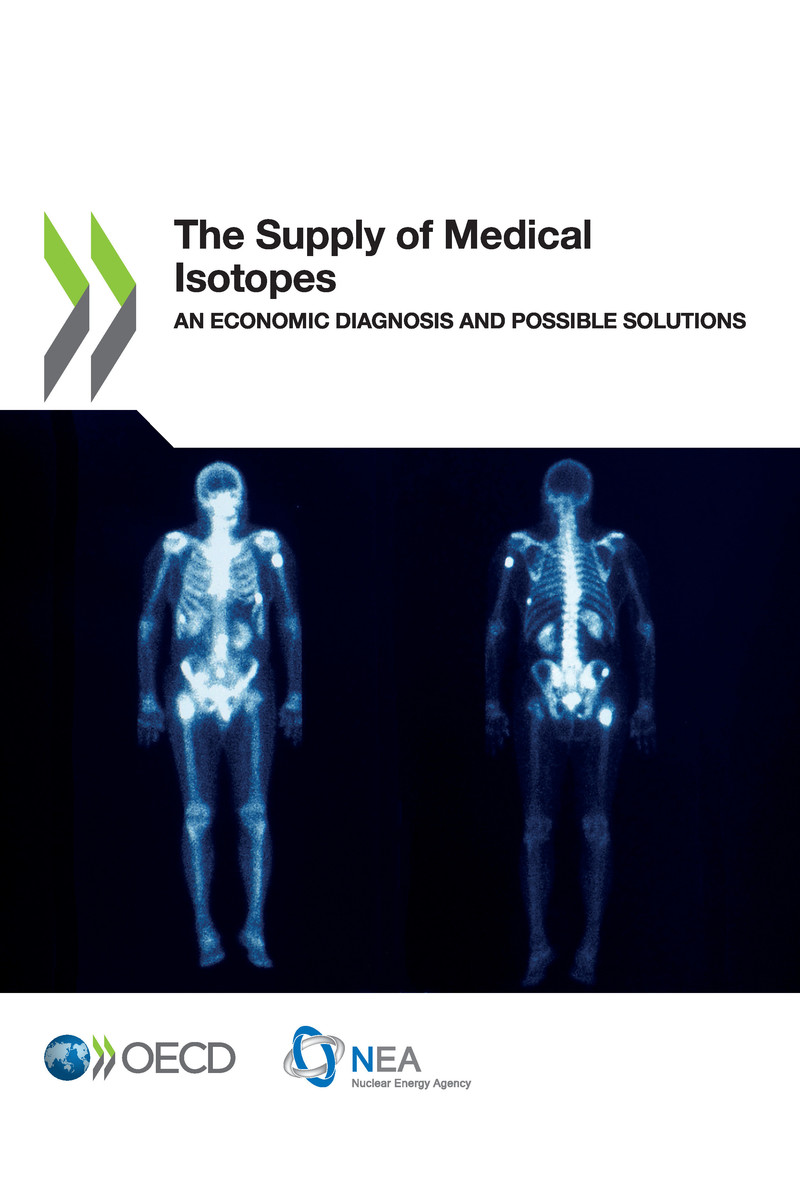
OECD/NEA (2019), The Supply of Medical Isotopes: An Economic Diagnosis and Possible Solutions , OECD Publishing, Paris, https://doi.org/10.1787/9b326195-en .
Technetium-99m (Tc-99m) is the most commonly used radioisotope in nuclear medicine (NM) diagnostic scans. It is essential for diagnostic scans of a broad range of body parts, and thus for accurate diagnoses of diseases, such as cancer, heart disease and neurological disorders including dementia and movement disorders, and effective patient care in health systems of OECD countries. It is also the most common diagnostic radioisotope, estimated to be used in approximately 85% of all NM diagnostic scans worldwide. The properties of Tc-99m, however, make its supply chain complicated. Tc-99m is obtained from radioactive decay of its parent isotope, Molybdenum-99 (Mo-99). Neither of these products can be stored for very long. Mo-99 has a half-life of 66 hours, that is, its radioactivity decreases by half in 66 hours, and the half-life of Tc-99m is only six hours. Therefore, supply is a just-in-time activity, combining a mix of governmental and commercial entities, and requires sufficient capacity for ongoing production of Mo-99 plus a reserve in case of unplanned outages.
Given this complexity, supply of Mo-99/Tc-99m to health care providers has often been unreliable over the past decade due to unexpected shutdowns and extended maintenance periods at some of the facilities that produce Mo-99, many of which are relatively old. These shutdowns have at times created extended global shortages. In particular in 2009-10, a series of unexpected outages of the nuclear research reactors (NRRs) required for Mo-99 production led to a global supply crisis and a severe shortage of Tc-99m. In response to the crisis, the OECD Nuclear Energy Agency (NEA) established the High-level Group on the security of supply of Medical Radioisotopes (HLG-MR) to help secure stable and economically sustainable supply of these products in the short and long-term. The HLG-MR developed a comprehensive policy framework to address supply chain issues based on six policy principles (see Annex A), which were endorsed by the NEA Steering Committee for Nuclear Energy.
During the HLG-MR meeting held on 21-23 January 2014, the NEA was asked to look at developing a more formal statement of commitment to the HLG-MR principles. Discussions were held with member countries and a consensus document, the Joint Declaration on the Security of Supply of Medical Radioisotopes was developed. On 17 December 2014, the OECD Council formally noted that eleven countries had officially signed up to the Joint Declaration; subsequently three more countries have confirmed their adherence. The Joint Declaration provided a co-ordinated political commitment by countries involved in the production and use of medical radioisotopes to bring about necessary changes across the whole supply chain and to encourage others to do likewise.
By 2017, supply had stabilised somewhat because of the actions of existing supply chain participants co-ordinated by the HLG-MR and the continued support of some governments. Many of the technical problems that led to the 2009-10 shortage had been solved. However, self-assessment by the HLG-MR indicated that considerable risks to the stability of the supply chain remained unaddressed. Full implementation of the six policy principles that were agreed upon was slow. Participants in the supply chain struggled to implement policy principles related to charging prices high enough to allow for full-cost recovery (FCR) and to keeping sufficient outage reserve capacity (ORC). Prices that do not reflect the full costs of medical isotope production and of their distribution throughout the supply chain pose risks of delay or cancellation of investments in existing or new facilities and could imply an increased risk of further supply disruptions or shortages in the future. Further details on the 2009-10 crisis, the Mo-99/Tc-99m supply chain, and work by the NEA and the HLG-MR can be found in prior reports published by the NEA.
At its meeting in July 2017, HLG-MR delegates requested the support of the OECD Health Committee to conduct a study from a health system perspective that describes the need for radioisotopes in national health systems and analyses the current market structure, identifying barriers to implementation of FCR, the first policy principle in the framework developed by the HLG-MR. This report is an answer to the request, and presents findings of the joint work between the NEA and the OECD Health Committee, which focused on NM diagnostic procedures that use Tc-99m. Geographically, the report focuses on Australia, Canada, Japan and the United States, the four non-European countries that are the largest end-users of Tc-99m, as well as countries of the European Union and Switzerland.
This report contains five main Chapters. Chapter 1 summarises the utility of NM diagnostic scans from a clinical perspective and outlines the main alternatives to Tc-99m-based procedures. Chapter 2 provides an overview of the volume of NM diagnostic scans conducted in the countries in scope. Chapter 3 summarises health care provider payment for NM diagnostic services and the financial incentives that arise from provider payment mechanisms. This particular analysis is limited to the United States and 17 countries that responded to the OECD Health Division Survey on Health Care Provider Payment for Nuclear Medicine Diagnostic Services: 13 of 23 countries that are members of the European Union and the OECD as well as Australia, Canada, Japan and Switzerland. Chapter 4 analyses market structures in the Mo-99/Tc-99m supply chain. Chapter 5 identifies the main barriers to FCR and outlines possible measures governments could take to increase the reliability of Mo-99/Tc-99m supply.
Respondents of 13 of 23 countries that are members of the European Union and the OECD responded to the OECD Health Division Survey on Health Care Provider Payment for Nuclear Medicine Diagnostic Services: Belgium, the Czech Republic, Denmark, France, Germany, Latvia, Lithuania, Luxembourg, the Netherlands, Poland, Slovenia, Sweden, United Kingdom (England only).
Font size:
Interval:
Bookmark:
Similar books «The Supply of Medical Isotopes»
Look at similar books to The Supply of Medical Isotopes. We have selected literature similar in name and meaning in the hope of providing readers with more options to find new, interesting, not yet read works.
Discussion, reviews of the book The Supply of Medical Isotopes and just readers' own opinions. Leave your comments, write what you think about the work, its meaning or the main characters. Specify what exactly you liked and what you didn't like, and why you think so.

